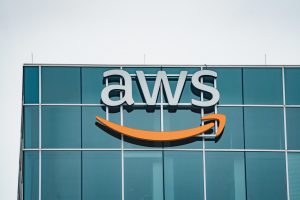HP Data Thrust is Delivering Performance in the Cloud, says HP Exec
![]() “The mission of HP storage in a sentence is assisting customers to make the transition from enterprise to cloud,” says HP CTO for Storage and former Cloud Advisor Milan Shetti in an interview with Wikibon Chief Analyst David Vellante in the Cube at VMworld 2011 (full video below).
“The mission of HP storage in a sentence is assisting customers to make the transition from enterprise to cloud,” says HP CTO for Storage and former Cloud Advisor Milan Shetti in an interview with Wikibon Chief Analyst David Vellante in the Cube at VMworld 2011 (full video below).
“The biggest impediment to virtualizing mission-critical applications and moving them to the cloud is performance,” he says. And the key to performance is data access. “If application performance can be made fast enough, we can easily envision Oracle in the cloud.” That is HP’s vision.
And, he said, you can see that vision working out in the acquisitions HP has made in the last two years, including Ibrix, 3PAR, and Left Hand, and in the announcements HP made in the last two weeks. On the surface those announcements may seem anti-virtualization in the sense that they are not designed to support virtual storage. But, he says, in reality they are only a step forward toward HP’s vision of supporting virtual environments.
The issue with virtualization is that it makes applications mobile. That is its big advantage because it makes the entire server infrastructure more efficient and more flexible. But it also breaks the connection between the application and its data, making data access times grow and slowing applications. So virtualization is very disruptive, and virtualization is weak in storage.
HP’s first step in solving this problem is to provide storage devices that support multitenancy and thin provisioining to make valuable data more available to the applications. The next installment is to make the data more available to the application wherever it is in the infrastructure. The data doesn’t have to move with the application, but the most used data and metadata needs to be available to the local cache or SSD in the server where the application is running.
When the storage infrastructure can provide that, customers will see their virtualized applications run much faster. That will allow organizations to virtualize more of their more critical applications, and particularly data-intensive apps, and move them into the cloud.
Solid state and flash storage devices can play an important role in this, he said, but only if companies use them properly. “Customers don’t ask me how to get better meta-data performance,” he said. “They say, ‘I have this SSD. What do I do with it?’ They see the fast media, but they don’t understand how to make use of it.”
The answer, he says, is to use it to make their metadata about their most valuable data read faster. “Communities like Wikibon can play an important role in educating users about how to use their flash storage devices. That will make virtualized, cloud applications run 10-to-20 times faster.” And that, he said, is the key to getting Oracle into the cloud.
Watch live video from SiliconANGLE.com on Justin.tv
A message from John Furrier, co-founder of SiliconANGLE:
Your vote of support is important to us and it helps us keep the content FREE.
One click below supports our mission to provide free, deep, and relevant content.
Join our community on YouTube
Join the community that includes more than 15,000 #CubeAlumni experts, including Amazon.com CEO Andy Jassy, Dell Technologies founder and CEO Michael Dell, Intel CEO Pat Gelsinger, and many more luminaries and experts.
THANK YOU









